The word "inventory" refers to a business's underutilized stock of intrinsically valuable tangible products that are kept in its care in several ways until they are eventually packaged, stored, transformed, used, or sold. Every company that manufactures or sells products depends on its inventory. Odoo Inventory Management can handle thousands of operations or various transactions. It makes it possible for companies to manage their inventory of products or assets effectively.
You may optimize your warehouse by employing an inventory system and knowing which products sell the most so that you can put them together for quicker access. Even better buy processing and classification can be achieved by dividing your stock.
The process of taking the products out of shipments that have been received and putting them in the right location is called putaway. The Multi-Step Routes feature can be enabled in the Inventory module Settings to create the putaway rule. This will also activate the Storage Locations feature in the settings, as indicated below.
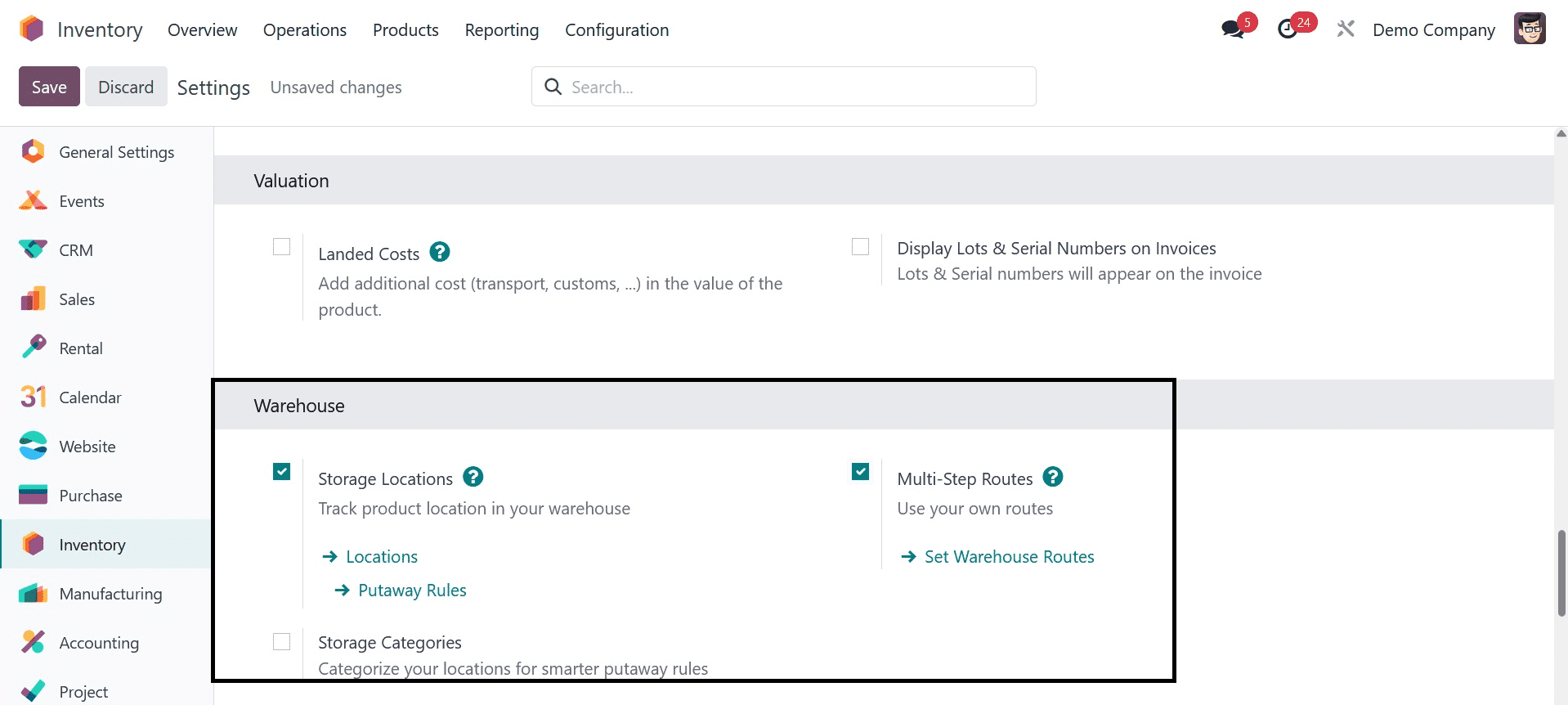
Let's use an example to verify that the putaway rule works as intended. Imagine a beverage shop that sells a range of drinks that must be stored in various areas, including a freezer, dry storage, or a refrigerator. So, let's see how we may handle this situation using the Odoo 17 putaway rule in this example.
As an example, let's say we have a warehouse location called WH/Stock. We may then establish its sublocations, as indicated below, such as WH/Stock and WH/Stock/Small Refrigerator.
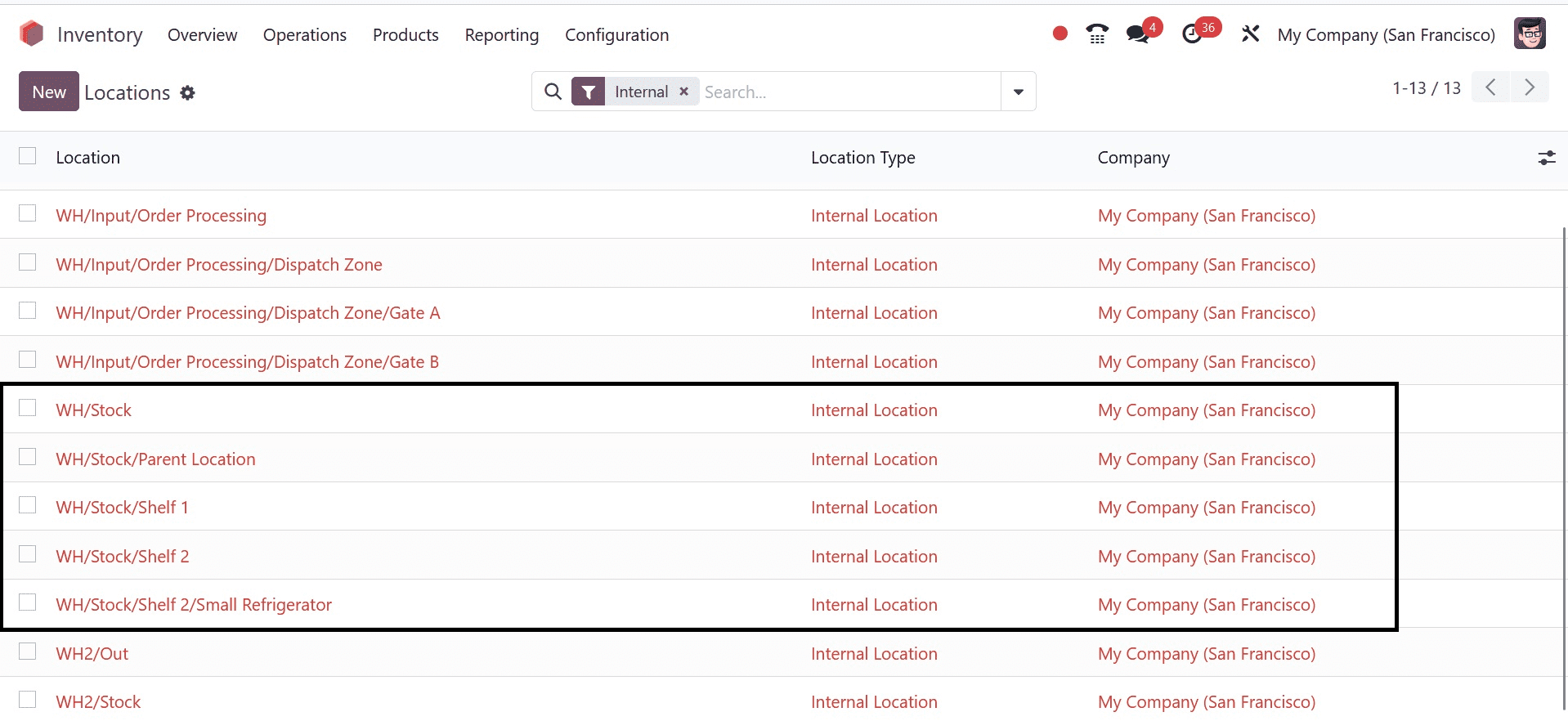
Let's now apply putaway rules to the places where the Inventory module's configuration calls for them. Next, choose Create, then click to configure a putaway rule. This will display the first spot the product will go before it is guided to the proper storage space, as indicated below.
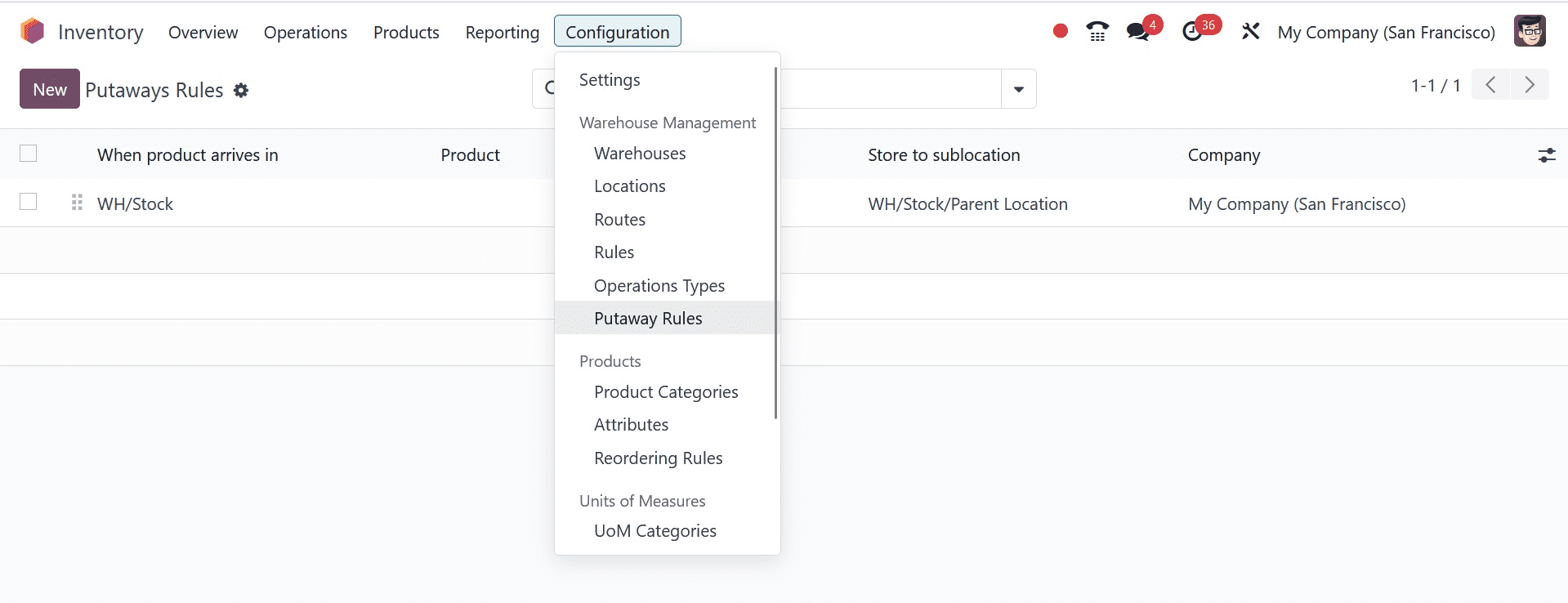
Let's now draft a buy order to a vendor for these goods and confirm the order, as indicated below.

The purchase order is now in draught status, however, it will change to done status after it is verified.
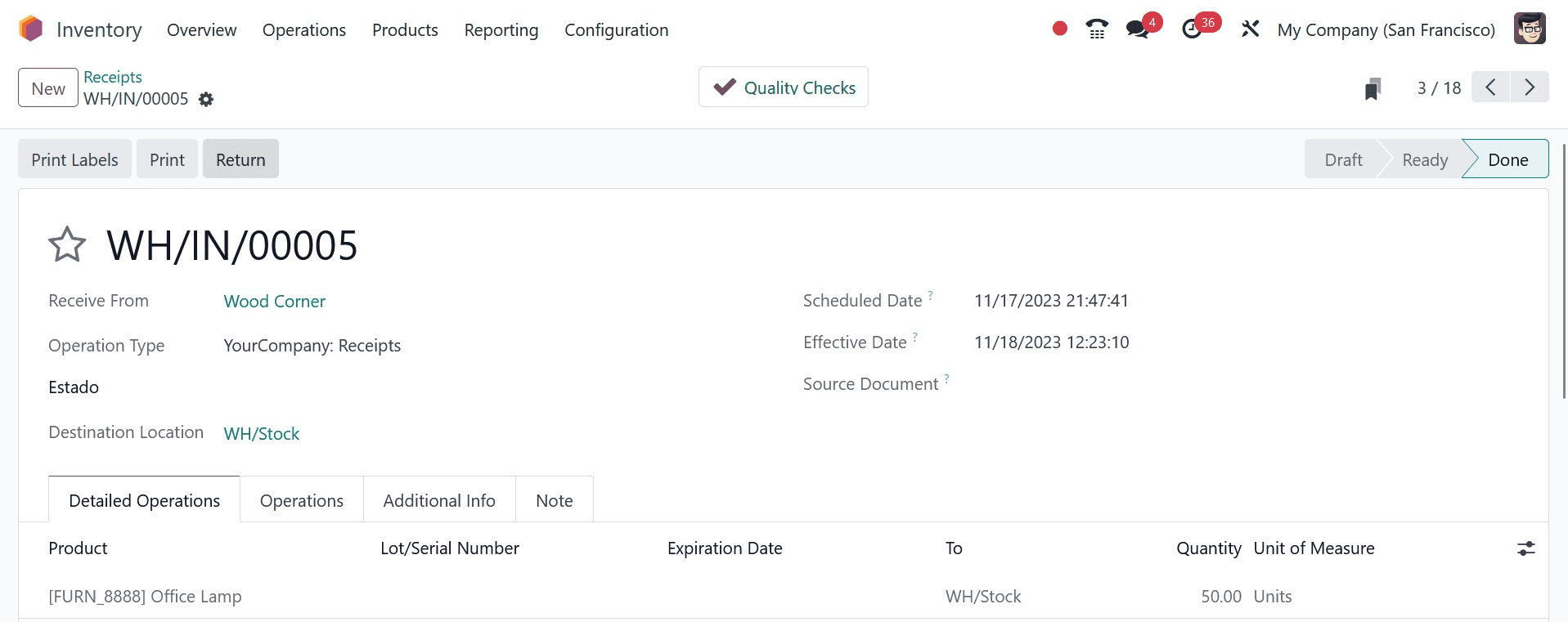
After verifying the order, let's see if the products are being delivered to the address specified in the putaway rule. To do this, return to the locations and select the location type, such as WH/Stock/ Refrigerator. From there, we can observe that, as seen in the image below, a smart button inside the location allows us to view the current stock. The inventory for Apple Cider has been adjusted at the sublocation known as Refrigerator.
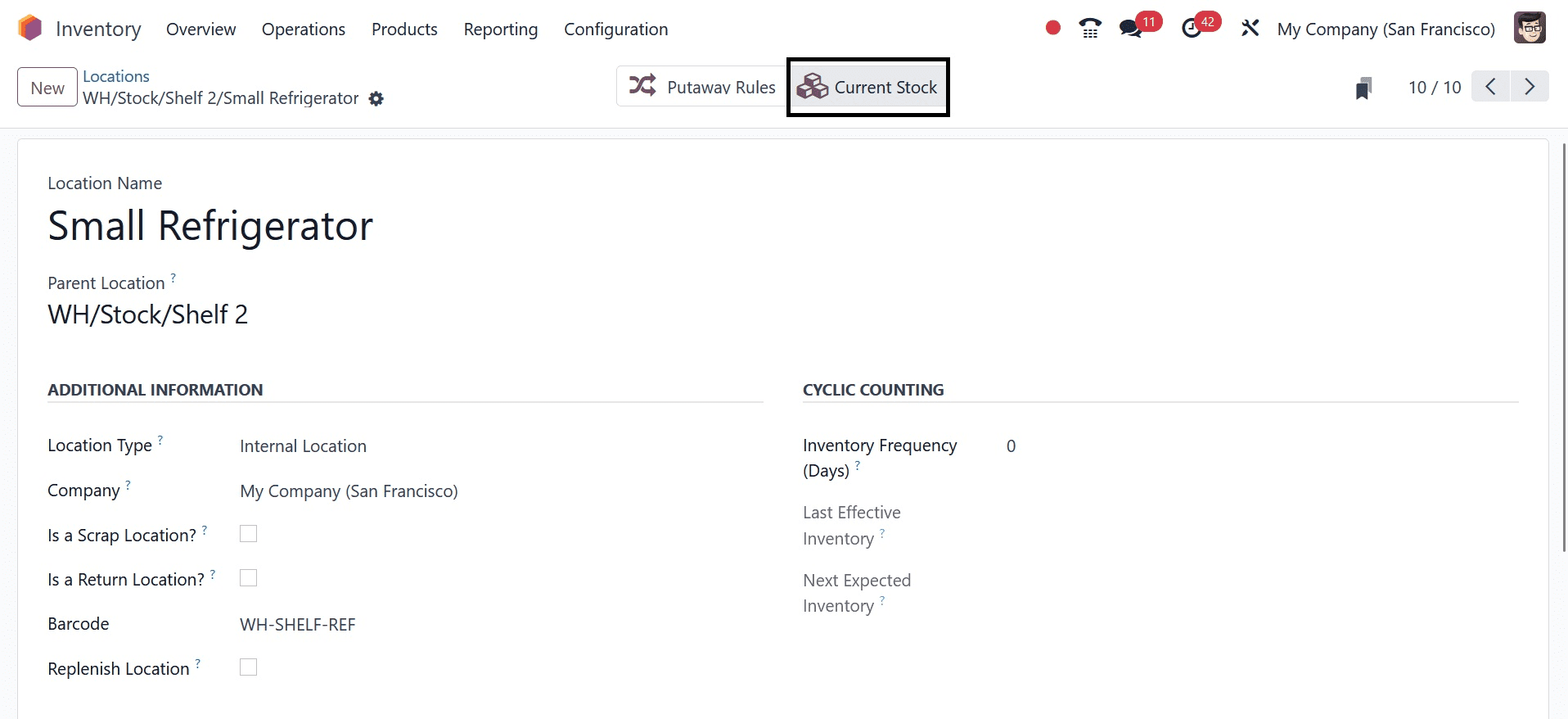
Opening the current stock smart button from the above form will display the product along with its location, quantity on hand, and quantity available.

This is how the putaway rule in Odoo 17 operates. If a warehouse contains volatile materials, it is important to keep specific products from one another to avoid causing a chemical reaction. Here's where putaway laws come into play to stop objects from being stored improperly.
To read more about the comprehensive description of putaway rules in Odoo 16, refer to our blog A Comprehensive Description of Putaway Rules in Odoo 16